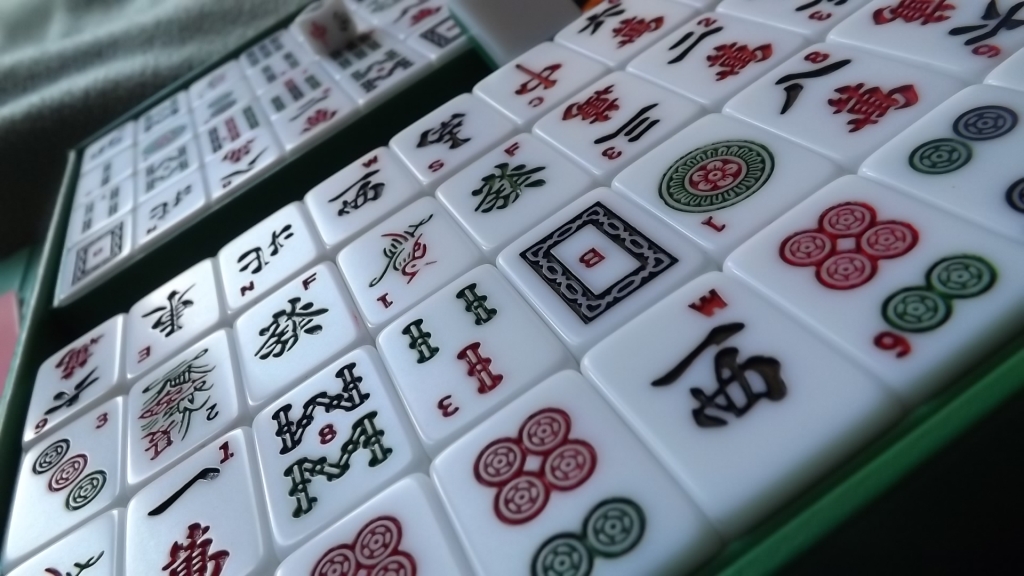Mahjong is difficult to penetrate at first glance. Unlike other widely popular gambling games, where a cheap pack of playing cards can be used to play a variety of games, mahjong requires a set of sometimes quite expensive 144 tiles to play. It also requires four players, which makes picking up the game on whim all the more difficult. Finally, and most prohibitively, the rules can seem complicated, especially as higher levels of play allow for complex strategies. Despite this I found mahjong to be pretty intuitive after I learned its first and most important rule: Hide your hand, and when it’s your turn draw a tile. If you do not have a winning hand of 14 tiles, discard a tile from your hand. This rule, which I’ll call the discard rule, is at the foundation of the game’s rule set, and has captured my imagination thanks to its simplicity.
What’s most interesting about the discard rule is the variety of ways it’s utilized despite being so simple. Primarily it’s used to keep the game moving. With the discard rule players are unable to simply collect tiles until they have a winning hand, and turns are given a clear end.
The discard rule also gives way to an element of the game called the discard pile, which, as the name suggests, is a collection of all the tiles the players have removed from their hands. Like in poker, players don’t know who has what or how far away their opponents are from winning. The discard pile gives some insight into who has what, and what has yet to be revealed, allowing for strategic play.
Finally the discard rule provides some conflict for the player whose turn it is, as they could throw away a winning hand if they discard carelessly. Of course there is a limit to how strategic a discard can be with only the discard rule in play since players’ hands are random, and players don’t know what tiles they’ll be drawing. To make this more interesting other players can use a discarding player’s tile against them to score points off of them or simply win. Keeping a mental tally of who probably has what, and what is probably left to be drawn now becomes very important because a reckless discard can play directly into someone else’s hand.

I fell in love with mahjong once I learned about the discard rule. It’s easy to understand, easy to execute, and, most importantly, is a required part of the game. There are other rules that make the game more complex and interesting, but anyone can play the game simply with the discard rule and possibly have a good time. I’m always looking for simple and ingenious examples of game design, and mahjong’s discard rule will always be one of my go-to examples of how a simple rule can be utilized to make a game fun.
Also the tiles look nice.
